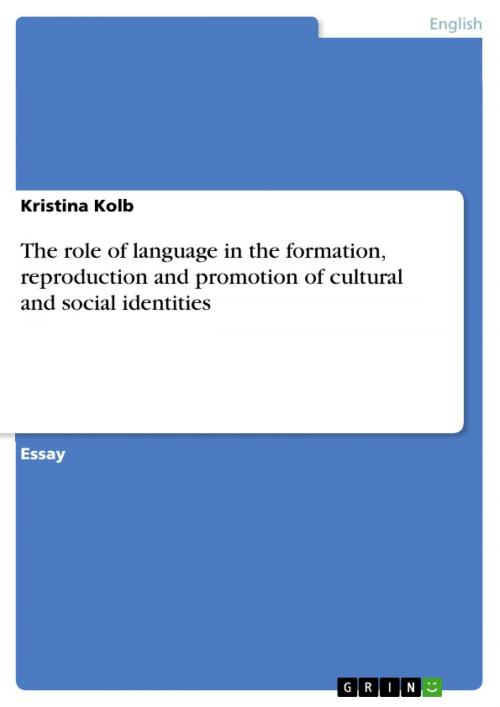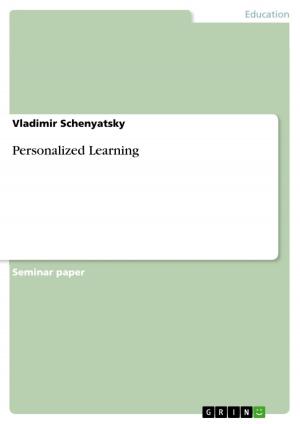The role of language in the formation, reproduction and promotion of cultural and social identities
Nonfiction, Reference & Language, Study Aids, ESL, Foreign Languages| Author: | Kristina Kolb | ISBN: | 9783640500970 |
| Publisher: | GRIN Publishing | Publication: | December 29, 2009 |
| Imprint: | GRIN Publishing | Language: | English |
| Author: | Kristina Kolb |
| ISBN: | 9783640500970 |
| Publisher: | GRIN Publishing |
| Publication: | December 29, 2009 |
| Imprint: | GRIN Publishing |
| Language: | English |
Essay from the year 2003 in the subject English Language and Literature Studies - Culture and Applied Geography, grade: B, , language: English, abstract: According to structuralist and post-structuralist theories, identities are relational, and as such they are formed and shaped through communicative processes. In order to communicate, we need a common system of signs that can be understood by every member of the group, in everyday speech referred to as 'language'. Although it is certainly true to say that language forms, reproduces and promotes identity, it must not be forgotten that identities are plural, intersect, interact and enter into conflict with each other, and language identity is no exception to this. Consequently, the relationship between language and identity, when taking a closer look at it, involves many different considerations and is not as clear-cut as one might anticipate.
Essay from the year 2003 in the subject English Language and Literature Studies - Culture and Applied Geography, grade: B, , language: English, abstract: According to structuralist and post-structuralist theories, identities are relational, and as such they are formed and shaped through communicative processes. In order to communicate, we need a common system of signs that can be understood by every member of the group, in everyday speech referred to as 'language'. Although it is certainly true to say that language forms, reproduces and promotes identity, it must not be forgotten that identities are plural, intersect, interact and enter into conflict with each other, and language identity is no exception to this. Consequently, the relationship between language and identity, when taking a closer look at it, involves many different considerations and is not as clear-cut as one might anticipate.















